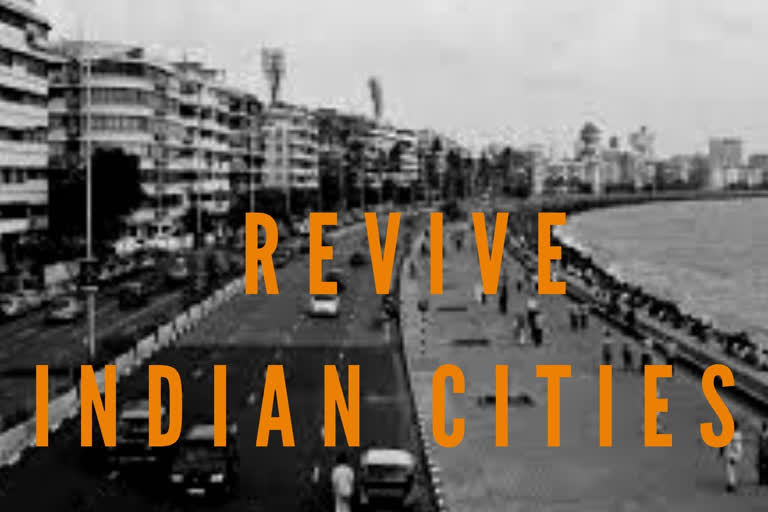Hyderabad (Telangana): In a list of world's livable cities, the national capital New Delhi ranked 118th among the 140 surveyed cities, while the financial capital Mumbai ranked 119th.
While international studies are stressing that cities from the pinnacle of a nation’s development, our Indian cities are turning nightmarish with each passing day.
Also read: Centre released Rs 590 crore to three state under AMRUT
With the aim of averting this crisis, the Modi government had launched the Atal Mission for Rejuvenation and Urban Transformation (AMRUT) initiative to develop several smart cities nationwide. The Center had chosen 100 cities for implementing the scheme on a step by step basis.
Though the Center promised to issue an interim report about the AMRUT developments, the latest economic survey had revealed that 5,151 projects worth Rs 2 lakh crores are in different phases of development across the country.
Though it was said that specialized systems, advisory committees and management consultants have been put in place for the project implementation in 100 cities, the reality is highly disappointing. As of November 14, 2019, 1,290 projects (roughly 11 per cent) worth Rs 22,569 crores have been completed while the rest are still in the tender process.
The government said that the top 20 cities including Ahmedabad and Amaravati have shown significant progress while the bottom 20 like Shimla and Chandigarh have a long way to go. Given the fact that air pollution and toxic gases are choking Delhi, the government must formulate plans with local needs as the priority.
The air quality in Delhi reached a toxic high that the Center had to declare a public health emergency. Going by the Air Quality Index, Delhi stood among the highly polluted cities of the world.
Another shocking revelation is that 76 per cent of India’s population is living in areas that fare poorly in air quality standards.
The Center has allocated Rs 4,400 crores in the latest Union Budget to address the threat of air pollution. While limited financial resources are a major impediment to the implementation of environmental development projects, the effects of climate change are severely impacting the cities.
The 5-year central budget for implementing AMRUT is Rs 48,000 crores! If Rs 100 crores are spent on each smart city annually over a period of 5 years, the local governments must contribute equally to the scheme.
Thus, the Center has estimated that each city would develop into a smart city through this initiative.
It expected to achieve exceptional results by linking the AMRUT with Swachh Bharat, Skill India and Awas Yojna. Although the Center stressed upon the spirit of federalism, there has been no improvement in any of the proposed cities even after the initial 5 years of scheme implementation.
As per the 2011 population census, urban populace constitutes for 31 per cent of the Indian population. This 31 per cent contributes to 63 per cent of the total GDP. By 2030, it is estimated that 40 per cent of the population will be concentrated in cities and that it would contribute to two-thirds of the total GDP.
The AMRUT was launched to create basic amenities, infrastructure, digital services, better public transport and pleasant public spaces for the future needs of cities.
The Economic Survey 2017-18 stated that India had to spend USD 4.5 lakh crores by 2040, in the field of infrastructure and that the major chunk of it should be spent on cities alone.
Also read: Has Cong outsourced task of defeating BJP to state parties: Sharmistha Mukherjee to Chidambaram
Union Minister Hardeep Singh Puri said that a city like Chicago must be built every year in order to be ready for the urban population influx in the next 10 years. We cannot expect a complete transformation of the cities without comprehensive development projects. The challenges in basic infrastructure will not be solved with such standalone schemes.
It is said that 80 per cent of the project funds are spent on regional development projects which benefit only 5 per cent of the total populace. With unprecedented urban migrations, the Indian cities are getting suffocated. The central and state governments must formulate policies and schemes to develop crucial infrastructure keeping in view the greater benefit of the public. Fresh air, water, proper sanitation services, healthcare, education and transport must become the top priorities in developing any city.



